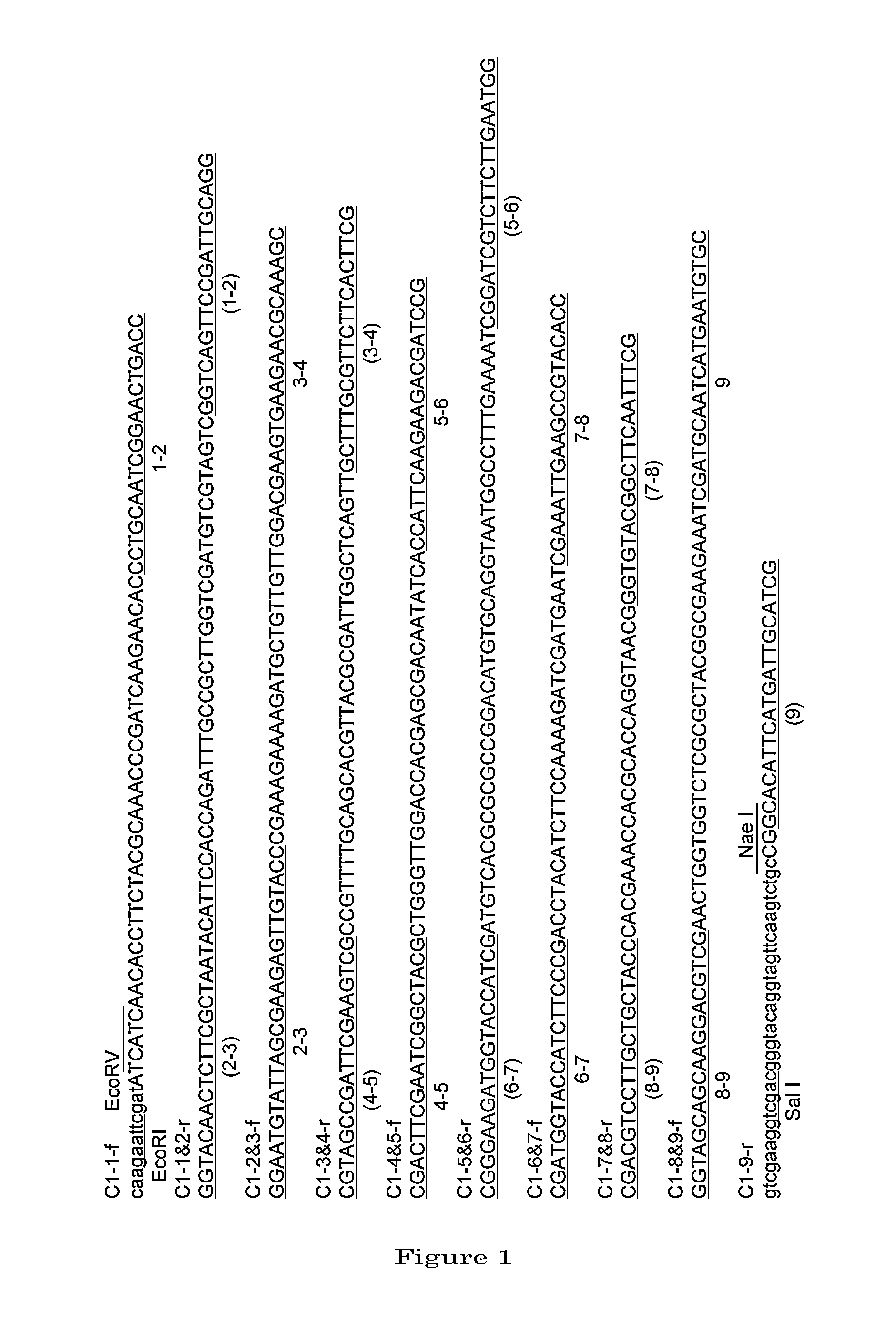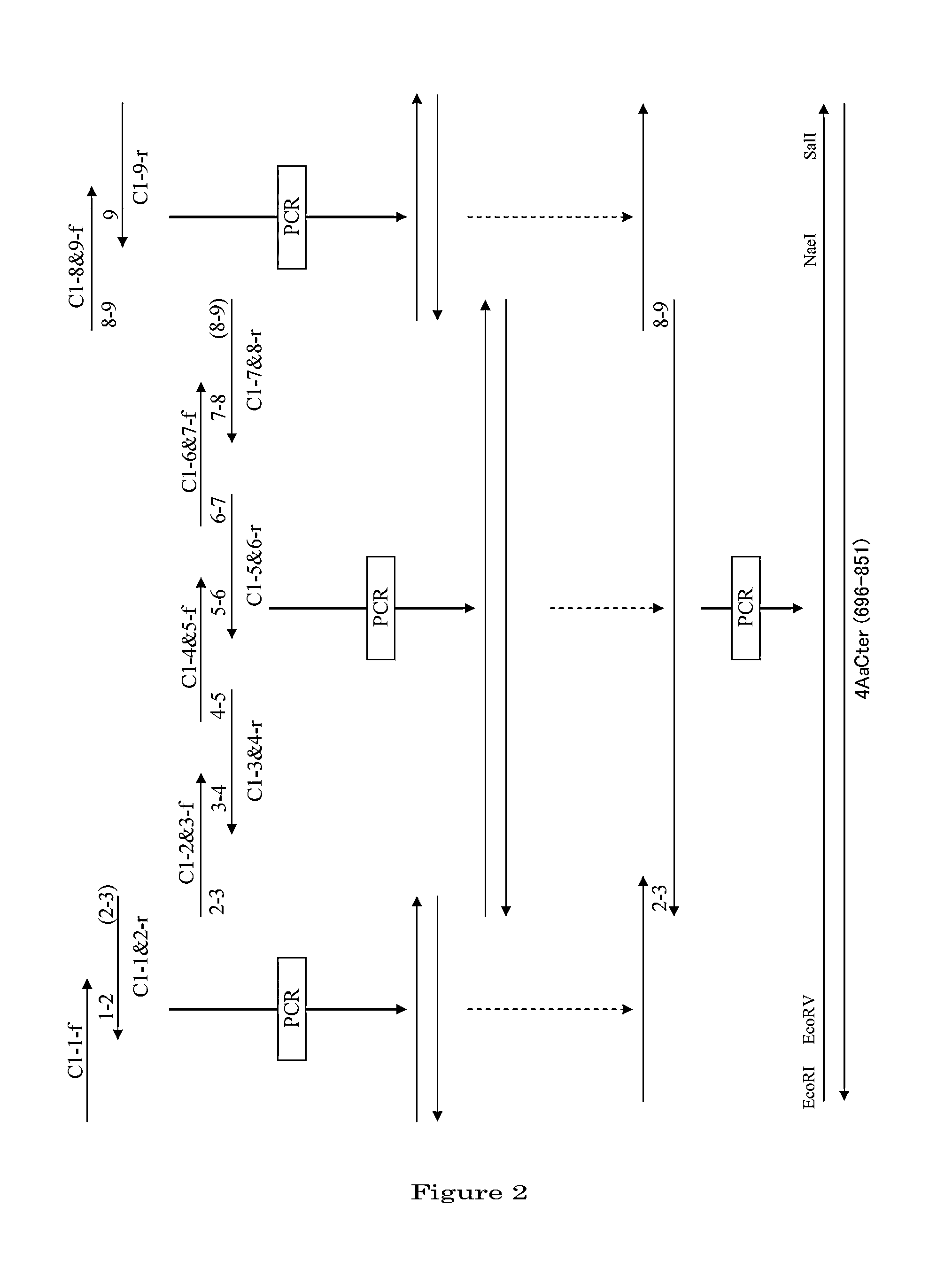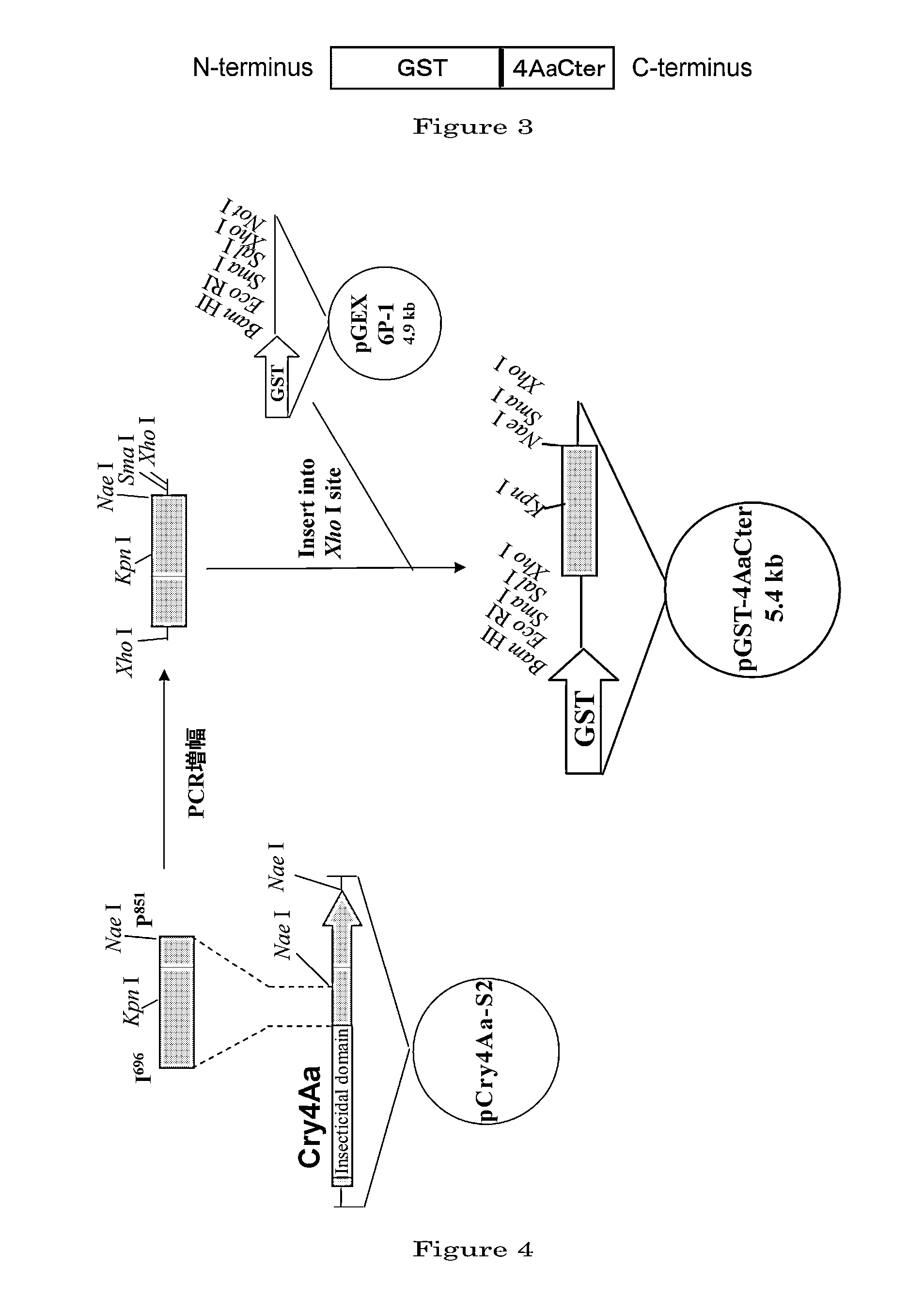Protein production method, fusion protein, and antiserum
a protein and fusion protein technology, applied in the field of protein production methods, can solve the problems of lowering production yield, difficult to solubilize such insoluble inclusion bodies of proteins, and trying to let heterologous proteins express/accumulate in the cells of microorganisms, etc., to achieve the effect of easy isolation, easy recovery of original heterologous proteins, and easy anti-serum to original proteins
- Summary
- Abstract
- Description
- Claims
- Application Information
AI Technical Summary
Benefits of technology
Problems solved by technology
Method used
Image
Examples
example 1
Production of Fusion Protein of 4AaCter(696-851) and Glutathione-S-transferase
[0103]According to the following procedure, glutathione-S-transferase (GST) originating from Schistosoma japonicum was expressed in a large amount and was let accumulate in E. coli cells, in the form of a fusion protein with 4AaCter (696-851), which is a fragment of the Cter of one of Cry proteins, Cry4Aa2, and corresponds to amino acids Ile 698˜Pro 851 of Cry4Aa2.
[0104]1. Preparation of a DNA Coding for 4AaCter(696-851) (FIG. 4)
[0105]Cry4Aa-S2 gene (formally named, in the priority document, syn4A gene) (which is a gene designed to express a polypeptide consisting of the full-length Cry4Aa's 1180 amino acids) was synthesized by recursive PCR. For this total synthesis, 50 to 55-base synthetic oligonucleotide primers were used which had been designed to cover the full-length nucleotide sequence of interest and at the same time to form base pairs consisting of 10 to 15 bases overlapping between adjacent ones ...
example 2
Production of Fusion Protein of Various Fragments of Cry4A and Glutathione-S-Transferase
[0122]Study was made to identify where the indispensable region resides in 4AaCter for a fusion protein to form crystals. As shown in FIG. 9, various parts of the amino acid sequence Cry4Aa were amplified, and their fusion proteins with GST were produced according to a procedure similar to that followed in Example 1. Each of them was examined for their formation of crystals in the same manner as in Example 1. The fusion protein with 4AaCter(852-1180) was not found to form clear crystals, nor did the fusion protein with GST-4AaCter(696-799) exhibit formation of crystals. On the other hand, crystal formation was confirmed with GST-4AaCter(696-851) [amino acid sequence of the Cter(696-851) portion: SEQ ID NO:6] and with those fusion proteins prepared using gradually shortened peptide chains, i.e., GST-4AaCter(801-851), GST-4AaCter(801-834) [amino acid sequence of the 4AaCter(801-834) portion: SEQ ID...
example 3
Production of Fusion Protein of 4AaCter(696-851) with MM29 kD
[0123]MM29 kD, a cytotoxic protein derived from B. thuringiensis, exhibits a potent toxicity to mammalian cells (esp. to leukemia and cancer cells). MM29 kD is produced and accumulated in B. thuringiensis cells in the form of a precursor consisting of 304 amino acids (whose nucleotide and amino acid sequences shown as SEQ ID NO:32 and SEQ ID NO:33, respectively), and converted to the active form through removal of 28 amino acids from the N-terminus and some from the C-terminus by proteinase K. Though it is not known as yet how many amino acids are removed from its C-terminus in nature, removal of 23 amino acids gives an active protein. And based on studies of its molecular size, it is considered that about 23 amino acids are removed also in nature. The nucleotide sequence of the active MM29 kD, which is formed by removal of N-terminal 28 amino acids and C-terminal 23 amino acids, is presented as SEQ ID NO:34, and the corre...
PUM
| Property | Measurement | Unit |
|---|---|---|
| molecular weight | aaaaa | aaaaa |
| concentration | aaaaa | aaaaa |
| pH | aaaaa | aaaaa |
Abstract
Description
Claims
Application Information
 Login to View More
Login to View More - R&D
- Intellectual Property
- Life Sciences
- Materials
- Tech Scout
- Unparalleled Data Quality
- Higher Quality Content
- 60% Fewer Hallucinations
Browse by: Latest US Patents, China's latest patents, Technical Efficacy Thesaurus, Application Domain, Technology Topic, Popular Technical Reports.
© 2025 PatSnap. All rights reserved.Legal|Privacy policy|Modern Slavery Act Transparency Statement|Sitemap|About US| Contact US: help@patsnap.com



